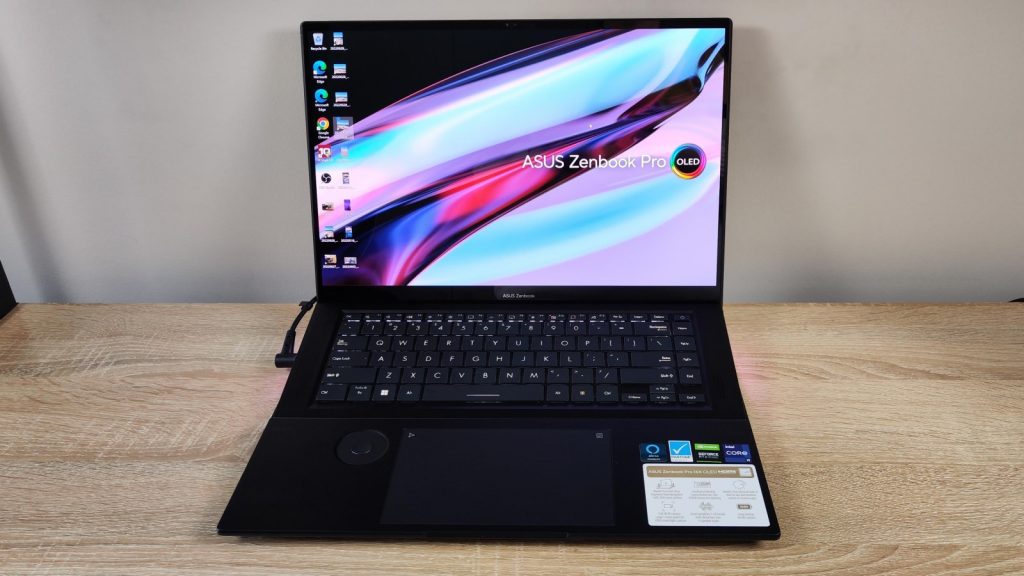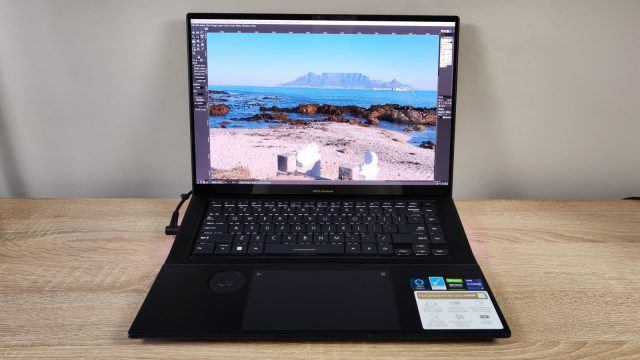Chinese consumer electronics company Honor is set to unveil its latest lineup of smart devices for the South African market. How about we forecast…
Asus Zenbook Pro 16X OLED review: a creative powerhouse

The Asus Zenbook Pro 16X OLED was announced earlier this year–another device set to reaffirm the technology company’s position as the top OLED laptop brand and top creator laptop brand globally.
But rather than adding a second screen or gimmicky add-ons, the Pro 16X OLED focuses on performance and providing an optimized experience for creators.
We spent a few weeks with the device and here’s what we found…
Asus Zenbook Pro 16X OLED features
The laptop comes packed with powerful hardware and a generous display so that creators and professionals can manage their workload in a more mobile form factor.
This focus on performance means that the Pro 16X OLED does not fall into the ultralight category of Zenbook devices. Rather, it’s quite hefty at 2.4kg.
But with this weight it packs in impressive specs. Our device included a 12th-gen Intel Core 19-12900H processor – one of the fastest mobile processors on the market. For its GPU, it includes a Nvidia GeForce RTX3060 graphics card.
Our device also had 32GB of DDR5 RAM, along with a 96Wh battery.
In terms of unique Asus features, the laptop includes an Asus Dial. This built-in dial is compatible with a variety of apps and can be programmed for easy access to settings. You can program the dial to control system settings such as brightness and volume. There are also the app-specific features. For the Adobe apps that creators use, you can access a variety of functions for the dial, such as scrolling through a video timeline, adjusting saturation and contrast, and other myriad features.
All this productivity for the creative workflow is complemented by the inclusion of a 16-inch 4K 16:10 OLED HDR touchscreen. Not only is it Pantone validated, with 100% DCI-P3 color gamut and 133% sRGB color gamut, but you can adjust the display’s color gamut to one best suited for your work.
Now that you know the laptop’s major selling points, let’s look at how it performs in daily usage.
Zenbook Pro 16X OLED performance for daily work
In addition to testing the laptop’s photo editing capabilities and general performance in daily usage, we ran the device through a range of benchmarking tests.

The laptop features the Asus Active Aerodynamic System Ultra (AAS Ultra) hinge, which is a lifting mechanism that raises the keyboard from the main body of the laptop when opened up.
Not only does this create a satisfying typing experience on the raised keyboard, but it helps keep the laptop cool when in use. When using the device and running it through benchmarks, it kept cool and did not succumb to the heating issues of many other high-performance laptops.
During a PCMark 10 Extended benchmark, the laptop scored 7526. This ranks better than 63% of all results – performing better than a 2020 gaming laptop and closer to a 2020 gaming desktop.
It also scored 9292 in the digital content creation test, making it perfect for tasks such as editing photos and video, as well as rendering. UL Solutions, the developers of the benchmark, recommend a score of 3450 or higher for these tasks.
OLED display

There’s a reason Asus is the top OLED laptop brand in the world. The brand packs in OLED displays into many of its devices, including the more affordable Asus Vivobook 15 OLED.
But the Zenbook Pro 16X OLED especially stands out for its combination of a high-resolution display with the colour accuracy and contrast of OLED technology. Add to this the touchscreen functionality, and you have a display primed for visuals and productivity. A stylus is included in the box to help you make the best use of the touchscreen.
Its 550-nit peak brightness also helps retain clarity in brightly lit environments.
The display’s only drawback is that it’s limited to 60Hz, which may be jarring to users who are used to displays with a higher refresh rate. But during our time with the device, this wasn’t really noticeable. Even though I work on a 140Hz display, the slower refresh rate on the Zenbook Pro was only really apparent when viewing the display settings.
Battery life
In terms of battery life, the Zenbook Pro 16X OLED lasts well for a device with its performance-focused hardware. During a local video playback test, the laptop lasted just over 6 hours at 50% brightness.
While this isn’t as long as a device like the enterprise-focused Asus Expertbook B7 Flip, it’s more than decent for a device with this type of hardware. This means that even when on the go, you can use the Pro 16X OLED with the confidence that it will last through your work day.
Review verdict: Is the Asus Zenbook Pro 16X OLED worth it?
The Zenbook Pro 16X OLED squarely targets the creator market, providing a performance-focused device that’s perfect for video and photo editing and rendering tasks.
Asus highlighted its focus on performance during a recent showcase event and this laptop definitely delivers on that vision.
Starting at R58,999 on the Asus South Africa store, this performance doesn’t come cheap. But that’s expected for devices that feature these specs.
If you’re looking for a device with impressive hardware, optimized cooling, and a unique functionality-focused dial, this is it.


